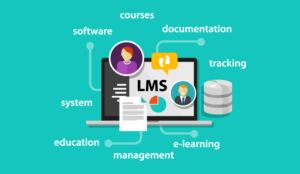Technology is shaping the future of business and, in terms of learning and development, it has a lot of benefits to offer.
So, let’s take a look at some of these key benefits of e-learning.
1. e-Learning Is Adaptable
E-Learning modules can be customised for different learning situations or audiences, and modifications can be tracked and saved. This makes preparing and managing learning modules easier.
Instead of having to create new learning materials from scratch, L&D managers can access the knowledge database and draw from it to compile content for new learning modules. This is a more time-efficient way of working and also ensures that learning content is accurate and of a consistent quality and style.
When new content is added, templates can ensure that the content is filed accurately, so that when it needs to be updated, it is easy to do so.
2. e-Learning Makes Learning More Accessible
Most people are accustomed to accessing information online, if not on their desktops, then on tablets and their mobile phones.
Being able to access information anywhere has also become the accepted norm, and e-Learning supports this. Integration across multiple platforms makes it easier for employees to access learning materials whenever it is convenient for them, and this improves employee engagement.
3. e-Learning Makes Learning More Engaging
Because e-Learning can be customised and targeted towards specific topics, it is more likely to appeal to the interests of employees. If they are focused on developing their personal skills and career knowledge, then e-Learning is a tool that can help them achieve that quite easily.
A key benefit is that people can work through learning content at their own pace. This means that someone with a keen interest in a particular subject can complete additional modules which will equip them with the knowledge they need to progress in their career.
4. e-Learning Can Improve Learning Retention
One of the key challenges L&D managers face is finding ways to follow up on learning to embed the knowledge and ensure a transfer of skills. e-Learning provides an easier way to do this.
ERROL, for example, uses the default of a daily email for learners to recap on knowledge and test it. This approach to learning retention is effective because it is consistent and focuses on retaining small amounts of information at a time – as opposed to the massive brain dump that occurs in traditional lecture-type learning sessions.
5. e-Learning Supports Continuous Learning and Development
With e-Learning, it is possible to create a library of learning resources that can be easily accessed when needed. This is not only useful when looking for information to solve a particular query, but it can also stimulate and support a culture of continuous learning within an organisation.
When employees are encouraged to log their learning experiences and there is an easy way to do this – such as an e-Learning platform – it benefits both the organisation and its employees.
6. e-Learning Is More Cost-Effective in the Long-Term
While the cost of setting up e-Learning may initially appear to be an additional expense, this needs to be considered in terms of the long-term benefits.
Compared to the costs of one-off classroom training, the costs may seem high. However, e-Learning is not a one-off learning experience, but is instead a tool that facilitates ongoing and continuous learning.
As the knowledge base is built up and learner participation increases, there is an incremental return on investment. The value of learning retention and employee engagement facilitated by e-Learning should also not be underestimated. These are key factors in retaining good people and ensuring that they are productive.
Additionally, e-Learning supports the role of learning and development managers, providing them with the tools they need to create relevant and engaging learning materials.
One of the key benefits of e-Learning is that the delivery method is inexpensive. Compared to hiring a venue and presentation equipment, being able to facilitate learning online costs very little.
Considering how much business revolves around technology, it makes sense that this should be the central tool used to facilitate learning and development in the modern-day workplace.
It works for employees because it is convenient and engaging and can be made a lot of fun too. And it works for organisations because it is a cost-effective and efficient way of delivering relevant content in the form of continuous learning and development to employees.
Author: Guest Author
Published On: 17th Aug 2018 - Last modified: 17th Sep 2019
Read more about - Guest Blogs, Ember















